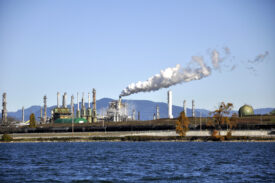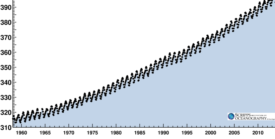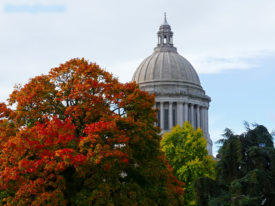Clark:
Fascinating price charts: It’s not just oil prices that are hitting the roof: copper, corn, soybeans, coffee, cocoa, and sugar are all at or near historic highs. (Well, sugar’s just coming down from a price spike, but still…)
I understand why corn, soybeans, and sugar are spiking at the same time as oil: we turn corn & sugar into ethanol and soybeans into biodiesel, so when oil prices rise, their substitutes get more expensive also. But for cocoa, coffee, copper—well, I’ve got no clue what’s going on. Are the simultaneous price spikes all coincidences, or is the commodity market going through another speculative bubble?
From the Economist, a reminder that Americans spend more time commuting than most Europeans. And remember, time is money—so America’s low gas prices (yes, compared to Europe they’re low) don’t translate into low-cost travel habits.
The inter-city bus bounces back: “For the third year in a row, the intercity bus service was the fastest growing mode of intercity transportation, outpacing air and rail…” Coincidentally (or not) inter-city buses are one of the lowest-carbon ways to travel.
Alan:
Gordon Price points out that Chinese Canadians were the ones who started the fight that saved downtown Vancouver, BC, from the freeway invasion of the 1960s.
The ever insightful, and provocative, economic historian Robert Fogel is about to release a magnum opus on human health through the ages. He and his colleagues gauge health by examining evidence of our height and weight. The upshot: we are much bigger than our ancestors. A preview was in the New York Times this week.
We’re big proponents at Sightline of the idea of measuring what matters. But sometimes it’s hard to do that. In fact, sometimes trying to do that without enough humility—and adequate budgets for qualitative as well as quantitative measures—is counterproductive. Dana Goldstein provides a powerful case in point in “The Test Generation” in The American Prospect. The article describes the corrosive effects of tying teacher evaluations to high-stakes testing in public schools. The problem is not the idea of measuring what matters; the problem is that measuring teacher effectiveness is difficult and expensive. The shortcut of relying too much on standardized tests corrupts the whole educational process; it can turn good teachers into less good teachers.
In the same edition of The American Prospect, David Moberg has a worthwhile synopsis of the economic and equity case against Wal-Mart. Recommended.
Nate Silver’s New York Times blog post “Poll Finds Most Americans Uncertain of Trump’s Birthplace” isn’t (just) a joke. Read it so that you’ll be reminded just how peculiar and unreliable many survey-based “findings” are. Poll-weary respondents sometimes give intentionally stupid answers to obviously stupid questions. And the biases in polling increase over time, as the pool of potential respondents diminishes (from the decline of landlines) and gets more cynical.
Finally, to lift up your spirits, NASA has published fourteen images of our lonely oasis of life in the cold blackness of space. Our home planet is a miracle.
Eric dP:
I’ve got a trio of recommendations for this weekend:
The first one’s a batch. Like a lot of other climate policy advocates, I read with interest Matthew Nisbet’s post-legislative post-mortem, “Climate Shift,” which lays the blame for the failure of carbon pricing mostly at the feet of greens. You shouldn’t read Nisbet, however, without also reading Bradford Plumer’s considered response, Joe Romm’s blistering takedown, and Dave Robert’s filleting, the last of which comes complete with the Robertsian neologism “douchecanoe.” Dave also had another really excellent post this week—“Policy in an age of post-truth politics”—which Romm called “Grist’s best post ever.”
That was enough Internet fire-breathing for me.
Luckily, there’s fun stuff on the web too, like Center for Neighborhood Technology’s Abogo site, which I finally discovered. It lets you calculate the transportation costs of your residential location. I didn’t spend enough time with the site to fully understand it, but it looks promising.
My favorite recommendation, however, is Colson Whitehead’s “Better Than Renting Out a Windowless Room: The Blessed Distraction of Technology”. As a sometime-writer, I found Colson’s self-deprecating diagnosis to be remarkably accurate:
“I say, yes, you can rent out a hostage pit. You can also close your browser. It’s called willpower. If you can’t muster the will to lay off Gawker, how are you going to write a book? I can’t blame modern technology for my predilection for distraction, not after all the hours I’ve spent watching lost balloons disappear into the clouds. I did it before the Internet, and I’ll do it after the apocalypse, assuming we still have helium and weak-gripped children.”
Eric H:
My new-found love of bike commuting means less reading time on the bus. But apropos my link to AT-ATs and the deep-bore tunnel last week, here’s a look at the economic sense of another megaproject: the Death Star.








Chocolate
Hi Clark,Re: Rising cocoa price – This is due to post-election conflict on Ivory Coast.See, for example:http://www.rttnews.com/ArticleView.aspx?Id=1534754Cheers,Michelle